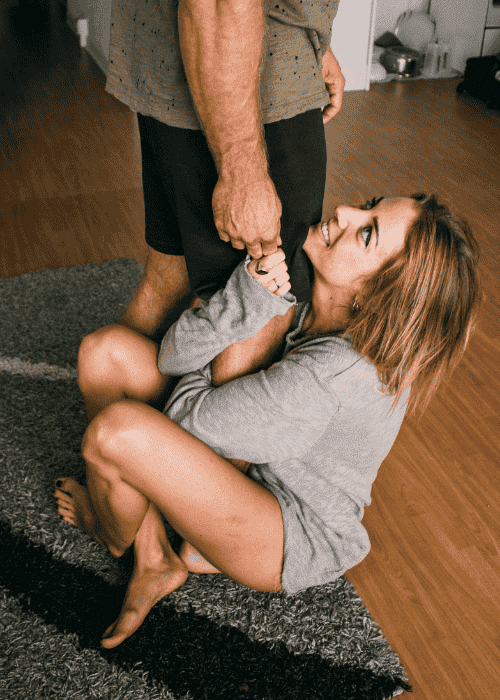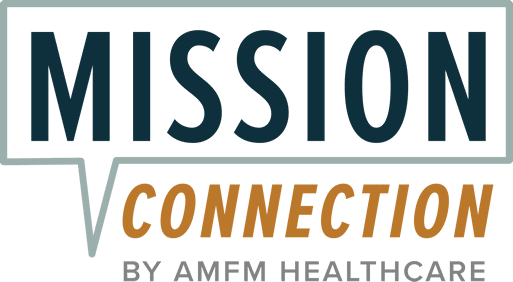Codependency in Adults: Signs, Causes, and Recovery

It might sound contradictory to say you can care for someone too much, but like most things in life, too much of anything can start to cause problems.
In the case of codependency, the relational balance can tip so heavily that what feels like love to one person can start to feel suffocating to the other. As this happens, someone’s needs can slip into the background, often leading to a variety of personal struggles.
If you’ve noticed these signs in yourself or perhaps in your partner, a mental health professional can provide guidance and support. Finding the balance between dependency and love is achievable, and the right approach can help you reach it.
This page can also help you understand codependency in adults, as it discusses:
- What codependency in adults is
- The difference is between health dependency and codependency
- The causes of codependency
- How codependency is treated
- Where to find help for codependency treatment

What Is Codependency in Adults?
In some cases, codependency can be hard to notice at first, especially as the other person may feel cared for, and the caregiver feels valued for being needed. Yet beneath the surface, the relationship can start to feel one-sided, with one person’s well-being depending on how stable or content the other is.1
However, it can be difficult to tell the difference between healthy dependency and codependency. The next section explores this difference.
What’s the Difference Between Healthy Dependency and Codependency?
In a healthy relationship, support moves both ways, but each person remains separate and has their own identity.3 Yes, your partner might be the designated dishwasher this week, but they aren’t taking over all the chores in your life.
Of course, this is just one small example of what healthy dependency looks like. The following are a few more examples of healthy dependency in relationships:2
Partners supporting each other equally.- Partners encouraging each other to face challenges with more confidence
- Feeling comfortable leaning on each other without losing independence
- Respecting each other’s need for personal space and individuality
- The relationship feeling balanced, not one-sided or controlling
In an interdependent relationship, your partner’s support gives you the strength to take steps forward while still allowing space for you to be your own person. This kind of healthy dependency doesn’t limit you and encourages you to grow into your best self.2
Codependency, on the other hand, goes beyond healthy dependency in ways that can become harmful. In codependency, one person’s well-being takes priority, while the other’s becomes secondary. The codependent partner often neglects their own needs and only feels truly valuable when they’re needed by the other. Below are some common signs of codependency.
Signs of Codependency: 4
Feeling anxious when the other person isn’t around- Prioritising their emotions before your own
- Struggling to make decisions without their approval
- Feeling responsible for their happiness
- Avoiding conflict to keep the peace
- Defining your self-worth by how much you can help or “fix” them
As this pattern continues, what once felt like love can begin to wear away emotional steadiness. The connection can soon feel confusing and draining, leaving both people caught in a cycle that feels hard to step out of.
Spotting the Signs of Codependency in Yourself
It can be surprisingly difficult to know when care and love start tipping into unhealthy patterns; after all, caring deeply is often seen as a strength. It’s probably the reason many people never question when care begins to cross a line.
But if you’ve noticed that the signs of codependency feel a little too familiar, it might be time to pause and shine a light on them for a moment of honest self-reflection.
If you catch yourself regularly thinking things like…
- If they’re upset, I can’t relax
- I’ll just handle it myself
- They need me to keep things together
- It’s fine, I don’t really need anything
- They’d fall apart without me
…then it may be worth considering that codependency could be influencing these thought patterns. Once you begin to recognize them, it’s natural to wonder where the causes of codependent behavior come from in the first place. This is exactly what we’ll explore next.
What Causes Codependency In Adults?
Codependency doesn’t appear out of nowhere, and there certainly isn’t one single cause for it. Different people have unique experiences and relationships. But by looking at what psychology has to say about codependency, we can start to understand what causes it to manifest in certain relationships.
The following are potential causes of codependency in adults.
Childhood Experiences
Growing up in a home where emotions are dismissed or boundaries are blurred can leave a lasting imprint on how someone connects with others. When affection feels uncertain, approval can start to feel like the only form of safety, almost like it’s something that’s “earned” rather than freely given.
In fact, a 2024 study found that emotional abuse and neglect during childhood were strong predictors of codependent patterns in adulthood.5 This demonstrates just how early these behaviors can begin to take shape.
Attachment Style
Adult attachment and codependency are also linked, especially for those with the anxious attachment style. Adults with this attachment style often crave closeness and fear losing it, leading them to seek constant reassurance that can slowly feed codependent behavior.
In support of this, research has found a moderate positive correlation between anxious attachment and codependency.6 It suggests that when fear of abandonment or mistrust begins to guide connection, affection can easily blur into dependence.
Trauma
Experiencing trauma, especially during childhood, can reshape how safety and control are understood. When chaos or fear becomes familiar, a person may start to believe that keeping others happy is the only way to avoid further harm.
Supporting this, one study identified a clear link between childhood trauma and higher levels of codependency later in life,7 showing how survival strategies from the past can influence adult relationships.
Low Self-Esteem
When self-worth hinges on approval, pleasing others can begin to feel like the only path to belonging. For instance, studies have found that women with high codependency scores often report significantly lower self-esteem and a tendency to underestimate their abilities compared with non-codependent peers.8 Such findings highlight how fragile self-worth can reinforce the belief that love must be earned rather than freely given.Learned Behaviors
Watching a parent continually suppress their own needs or carry the emotional weight of the household can teach a child that this is what love looks like. In fact, studies describe codependency as a learned behavior shaped through family modelling, where children internalize these roles and later recreate them in adulthood.9 Without realising that these patterns aren’t healthy, they can continue to shape how connection and responsibility are understood long into the future.Cultural Influences
Culture often plays an important role in how dependency is understood, shaping what people view as a healthy connection or selflessness. In communities where family duty and sacrifice are deeply valued, putting others first may not appear concerning at all. Yet research into collectivist cultures has found that strong loyalty and self-sacrifice can begin to resemble codependent traits when personal needs are continually set aside.10If you recognize some of these causes in yourself, this isn’t something to feel defeated over. Codependency isn’t something you’re necessarily stuck with forever, and even when it’s tied to heavy issues like past trauma, there are ways to help you untangle these roots.
How Is Codependency Treated?
Codependency isn’t listed as a formal diagnosis in the DSM-5, but this doesn’t mean support is limited. Instead, therapy for codependency may focus on the patterns that sit beneath it, issues like low self-worth or the lingering impact of trauma. When these foundations are addressed, the traits linked with codependency can begin to ease, allowing new ways of relating to develop naturally.
The following are some of the most commonly used therapies for codependency.
Cognitive Behavioral and Psychodynamic Therapy
CBT and psychodynamic therapy are two of the most recognized behavioral therapies for addressing low self-worth and unhealthy relationship patterns.11 Both work from different angles but share a common goal: to help people understand why they think and behave the way they do in relationships.
CBT focuses on identifying and challenging unhelpful thoughts and beliefs, while psychodynamic therapy explores where these patterns come from,11 often tracing them back to childhood experiences or attachment wounds. This connection between present behavior and past experience is what makes these approaches so relevant to codependency.
Research supports their effectiveness, with CBT for low self-esteem showing large improvements in confidence and reductions in depressive symptoms when sessions are delivered weekly. Psychodynamic therapy, meanwhile, has shown positive outcomes for issues related to emotional regulation.12
When used together, these therapies can help rebuild a sense of self that isn’t tied to another person’s approval or emotional state. By uncovering long-held beliefs about worth and learning new ways to connect, those affected can begin forming relationships that feel more balanced
Family Therapy
Because many codependent traits take shape within family systems, therapy that involves family members can be especially meaningful. Family therapy provides a safe space to explore long-standing dynamics and begin reshaping how each person relates to one another.
Studies examining family orientation groups have shown that participants gained insight into their own behavior and learned to set clearer boundaries, which helped restore balance within their relationships.13 These improvements highlight how shifting one person’s role within a family can have a ripple effect on the whole system.
For those dealing with codependency, this approach allows space to recognize how patterns of fixing or over-functioning developed in the first place.
Dialectical Behavior Therapy
DBT was originally created to help people manage intense emotions and impulsive behavior, but its focus on emotional regulation makes it particularly valuable for codependency. The therapy blends mindfulness with practical skill-building, helping people stay grounded during emotional surges rather than relying on others for stability.
For those who find themselves caught in cycles of reassurance-seeking or people-pleasing, DBT may be a good choice as a behavioral therapy for codependency. Its modules on mindfulness, distress tolerance, emotion regulation, and interpersonal effectiveness provide learnable skills that aim to help reduce emotional dependence.14
Eye Movement Desensitisation and Reprocessing
EMDR focuses on helping people process distressing memories so that past experiences stop influencing present emotions and behavior. It has been widely studied for anxiety and PTSD, both of which are often intertwined with codependency traits.
A 2025 meta-analysis reported that EMDR reduced symptoms of PTSD and anxiety, while also finding decreases in panic and phobia symptoms.15 These results suggest that EMDR helps calm the emotional triggers that fuel unhealthy coping mechanisms found in controlling relationships.
For those whose codependency stems from trauma or neglect, EMDR has the potential to be particularly powerful. By reducing the emotional charge of trauma, those affected can begin to separate old pain from current relationships, creating room for connection that isn’t built on fear or the need to be needed.
Where Can I Find Help for Adult Codependency?
If you’ve been struggling with relationship dependency or patterns that feel difficult to break, know that it doesn’t have to stay this way. No matter what side of the relationship you find yourself on, Mission Connection offers dedicated adult mental health support designed to help you overcome codependency and rebuild healthier ways of relating.
Many people hesitate to seek help, especially if they believe change isn’t possible, but we’re here to assure you that it absolutely is.
Through our comprehensive therapies, we focus on the underlying behavioral traits that drive codependency. By addressing these root causes, our team helps you begin the process of lasting change. Once these issues have been identified, you’ll work closely with our qualified professionals who will guide you through recovery strategies tailored to your individual needs.
Our treatment facilities are located across the U.S., and for those who may find in-person visits difficult, we also provide secure telehealth options. These allow you to access therapy from your preferred device, wherever you are.
Reach out to Mission Connection today and take the first step toward overcoming codependency. We’re ready to help you find a healthier connection with your mental health and relationship.

References
- Drescher, A. (2024, January 23). Are Codependent Relationships Unhealthy? Simply Psychology. https://www.simplypsychology.org/is-codependency-bad.html
- Martin, S. (2018, September 21). The Difference between Dependency and Codependency. Psych Central. https://psychcentral.com/blog/imperfect/2018/09/the-difference-between-dependency-and-codependency#What-is-interdependency
- Seltzer, L. (2022, May 18). Dependence vs. Autonomy in Relationships: What’s Ideal? Psychology Today. Www.psychologytoday.com. https://www.psychologytoday.com/us/blog/evolution-the-self/202205/dependence-versus-autonomy-in-relationships-what-s-ideal
- Selva, J. (2018, February 9). Codependency: What Are The Signs & How To Overcome It. PositivePsychology.com. https://positivepsychology.com/codependency-definition-signs-worksheets/
- Kaya, Z., Kale, K., Yağan, F., & Kaya, Ş. (2024). The mediating role of resilience in the relationship between childhood emotional abuse and emotional neglect and codependency. Children and Youth Services Review, 161, 107670. https://doi.org/10.1016/j.childyouth.2024.107670
- Ayhan, C. H., Aktaş, M. C., Aktaş, S., Tanhan, F., & Aktug, Y. (2025). Attachment styles and codependency among individuals with substance use disorders in Eastern Turkey. Journal of Ethnicity in Substance Abuse, 1–18. https://doi.org/10.1080/15332640.2025.2534675
- Evgin, D., & Sümen, A. (2021). Childhood abuse, neglect, codependency, and affecting factors in nursing and child development students. Perspectives in Psychiatric Care, 58(4). https://doi.org/10.1111/ppc.12938
- Kolenova, A., Kukulyar, A., Denisova, E., & Ermakov, P. (2024). Psychology in Russia: State of the Art, Moscow: Russian Psychological Society, Lomonosov Moscow State University, 2024, 1. Psychology in Russia: State of the Art. Psychologyinrussia.com. https://psychologyinrussia.com/volumes/issues/issue/volume-17-1-2024/
- Vlaicu, C., & Haidu, A. (2020). Co-dependency in intimate relationships – a learned behaviour. International Journal of Theology, Philosophy and Science, 4, 82-89. https://doi.org/10.26520/ijtps.2020.4.6.82-89
- Chang, S. (2010). Codependency among College Students in the United States and Taiwan: A Cross-Cultural Study. https://www.semanticscholar.org/paper/Codependency-among-College-Students-in-the-United-A-Chang/c76d2d35f0d5cb439b668f499da9464c42fe103a
- Kolubinski, D. C., Frings, D., Nikčević, A. V., Lawrence, J. A., & Spada, M. M. (2018). A systematic review and meta-analysis of CBT interventions based on the Fennell model of low self-esteem. Psychiatry Research, 267, 296–305. https://doi.org/10.1016/j.psychres.2018.06.025
- Fonagy, P. (2015). The Effectiveness of Psychodynamic psychotherapies: an Update. World Psychiatry, 14(2), 137–150. https://doi.org/10.1002/wps.20235
- Peixoto da Silva, M., Netto de Oliveira, A. M., Arruda da Silva, P., Algeri, S., & Flores Soares, M. C. (2019). Family orientation group as a strategy for care in chemical codependency. Investigación Y Educación En Enfermería, 37(3). https://doi.org/10.17533/udea.iee.v37n3e08
- Hernandez-Bustamante, M., Cjuno, J., Hernández, R. M., & Ponce-Meza, J. C. (2023). Efficacy of Dialectical Behavior Therapy in the Treatment of Borderline Personality Disorder: A Systematic Review of Randomized Controlled Trials. Iranian Journal of Psychiatry, 19(1), 119–129. https://doi.org/10.18502/ijps.v19i1.14347
- Seok, J.-W., Kim, K., & Kim, J. U. (2025). Therapeutic effects of eye movement desensitization and reprocessing for substance use disorders: a meta-analysis of addiction-related and emotional symptoms. Frontiers in Psychiatry, 16. https://doi.org/10.3389/fpsyt.2025.1660046
